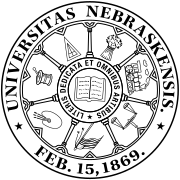1913 Easter tornado outbreak
Severe windstorm in the United StatesOn March 23, 1913—Easter Sunday—a devastating tornado outbreak affected the northern Great Plains and sections of the Upper Midwest, lasting approximately 31⁄2 hours. It was the most violent tornado outbreak to affect the northern Great Plains on so early a date in the year—a record that still stands as of 2020. That day, four F4 tornadoes affected portions of eastern Nebraska and western Iowa, killing at least 168 people. The deadliest tornado of the day was a violent tornado, retroactively rated F4 on the present-day Fujita scale, that grew to 1⁄4 mile (440 yd) in width as it passed through northern Omaha, Nebraska, killing at least 94 people in the city proper and three in rural areas. Damage in Omaha reached at least F4, possibly even F5, intensity, though confirmation of F5 damage could not be determined from available evidence. The tornado is the 13th deadliest ever to affect the United States and the deadliest to hit the U.S. state of Nebraska as of 2014. No other violent tornado would affect Omaha for another 62 years. Outside the Great Plains, the outbreak of March 23 also produced two other F4 tornadoes, one each in Missouri and Indiana, including a devastating path more than 1⁄2 mi (880 yd) through southern Terre Haute, Indiana, killing 21 people and injuring 250. In all, tornadoes struck Nebraska, Iowa, Louisiana, Indiana, and Missouri, though only significant events were recorded and other, weaker tornadoes may have gone undetected.







